BioShock 2
Would you very kindly?
You're a Big Daddy, and you're right, that doesn't sound very ambitious. As Take Two admits during our tour of 2K Marin, a lot of people bought the first BioShock because they thought you were a Big Daddy anyway. He's the guy on the box. He's got eight glowing eyes, JCB hips and a drillbit the size of a fridge stuck to his arm. And the fact is, by the time you got to the end of BioShock, you were so powered up that you practically and to some extent literally were a Big Daddy as well.
Except, there's also something wrong with the idea of being a Big Daddy in BioShock 2. BioShock was a first-person shooter with RPG elements and a brilliant story, laid out next to Randian extremism in a smotheringly coherent waterlogged coffin at the bottom of the Atlantic Ocean. But its sucker punch was an interrogation of free will in videogames, landed in a dizzying monologue by Andrew Ryan at the end of its second act. The Big Daddy may be a kickass monster, but he's also BioShock's supreme embodiment of what writer Ken Levine - speaking through Ryan - was attacking: he is conditioned to do one thing, and knows no better.
If 2K Marin, led by creative director Jordan Thomas (Fort Frolic, The Cradle), is committed to overcoming that paradox, BioShock 2 might actually be the more ambitious of the two games after all.
However, it's also clear that the Big Daddy is the wrong emphasis at this point, as senior character designer Colin Fix explains when he talks about the Big Daddy's probable replacement on this year's front cover: "It was my very first day, and Jordan took me into an office and was like, 'Alright, so, pretty much the premiere character of the entire game you'll start designing now.'" He wasn't talking about the Big Daddy. He was talking about the Big Sister.
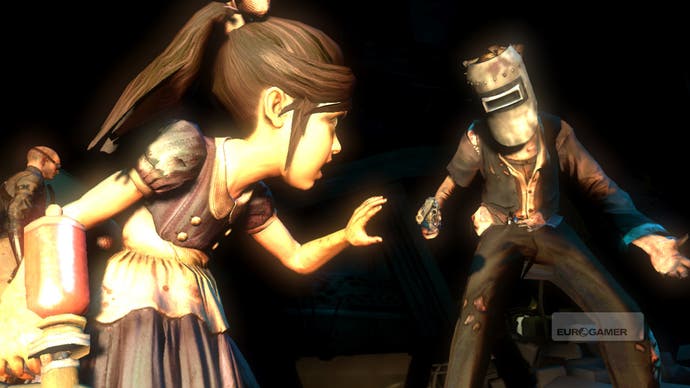
BioShock 2 is set in Rapture around a decade after the first game. The star of the first trailer, the little girl standing in the sand, is one of the Little Sisters liberated by the player's actions. But she couldn't assimilate into life on the surface. So she went back to Rapture, and put herself through a process that transformed her into the Big Sister. "This literal hybrid of a Big Daddy and a Little Sister", as Jordan Thomas - the new Ken Levine, if you like - puts it.
"She begins abducting young girls from all over the Atlantic coast and turning them into Little Sisters in an attempt to kind of jumpstart Rapture from the decayed hulk that it had become into the city of her memories," he explains. "And to her the status quo is very much Big Daddies and Little Sisters in perfect harmony. Even though that's a horribly conditioned nightmare, to her that is home." With new Little Sisters roaming around Rapture, she reboots the ADAM ecology, and the splicers - raging former inhabitants of the underwater city driven mad by their addiction to the substance that powers their genetic enhancements - are restored to a food chain that the Big Sister dominates.

The Big Sister is slender compared to the original Bouncers, with an ominous red glow burning through the single porthole of her diving suit headpiece, and a spider's-web cage on her back to carry Little Sisters, and she cuts a mournful figure in stills - hunched, closeted in tight strapping, with Polio braces on her legs and little bows tied to her back. In motion though, she is imperious. "What Jordan wanted was unstable grace, which are two very distinct visual qualities," says Jeff Weir, who supervises the animation. We see this in action during an attack on the player, where she scores a crescent gash across a broad glass wall, releasing thousands of tons of water into your path. She leaps and scrambles across the transparent surface with balletic composure before dropping into an arthritic landing.
The reason she wants you dead - and the way 2K Marin dodges the conditioning issue - is that you are not really a Big Daddy: you are a prototype whose conditioning has been broken, and you are being guided by the familiar voice of Dr Tenenbaum, who once again implores you to help her liberate the Little Sisters. But rather than reducing your options to simply "saving" them and then helping them to a nearby escape vent, BioShock 2 gives you two options: you can still "harvest" the girls' ADAM and use it to unlock new plasmids and tonics to enhance your abilities, but you can also choose to adopt them.



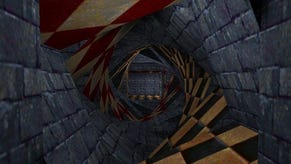
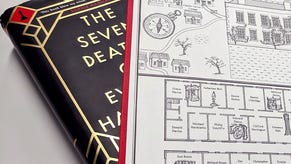
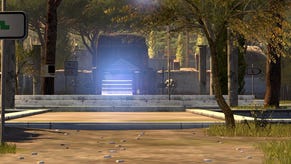
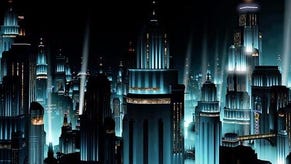
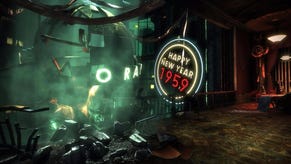
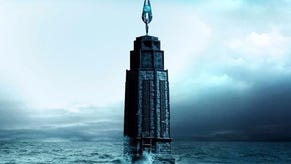



.png?width=291&height=164&fit=crop&quality=80&format=jpg&auto=webp)



